 Document setting up the Chain Trade Board, page 1
Document setting up the Chain Trade Board, page 1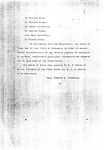 Document setting up the Chain Trade Board, page 2
Document setting up the Chain Trade Board, page 2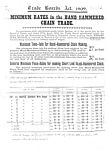 Chain trade minimum rates, page 1
Chain trade minimum rates, page 1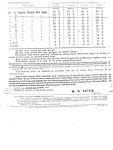 Chain trade minimum rates, page 2
Chain trade minimum rates, page 2 1st prosecution, page 1
1st prosecution, page 1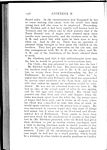 1st prosection, page 2
1st prosection, page 2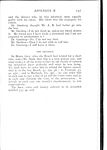 1st prosecution, page 3
1st prosecution, page 3

For many decades reformers tried to solve the problem of sweated labour. This was work which paid starvation wages for very long hours in poor working conditions. The majority of sweated workers were women. Restricting female and child labour had been tried. Attempts were made to get rid of domestic workshops, and consumers' leagues tried to convince people not to buy goods produced by sweated labour. All were unsuccessful. In 1909 the Government introduced the Trade Boards Act, which made it possible for different trades to set minimum wages. It was thought that setting minimum rates would curb sweating at its root. The Act marked an important change. The Government was moving away from its traditional policy of not interfering in the market economy.
Chainmaking, box-making, lace-making and ready made clothing were the first four trades covered by Trade Boards. Each Board could set its own minimum rate, and had an equal number of employers and workers with some independent members nominated by the Board of Trade. The Act allowed the workers to be helped by a skilled advisor. Mary Macarthur was elected to play that role on the Chain Trade Board, which was the very first to be set up. A copy of the document showing the make-up of the Board is shown above.
The Act did not cover the factory chainmakers, who were already well organised in trade unions and were quite well paid. Instead it dealt only with those in small workshops and domestic forges, mostly women, who were not well organised. The Board agreed a minimum rate of two and a half pence (1p) an hour, for a 55 hour week, which was still very low, but for some women meant they could double their earnings. The new rates became known as the "white list". The copy shown above was found in the Institute building when it was taken down.
The Chain Trade Board first met on 7th January 1910.The employers, five of whom belonged to the Chain Manufacturers' Association (C.M.A.), wanted to keep the rate as low as possible, so that they would not lose their profits or trade. Thomas Sitch, the Secretary of the Chainmakers' and Strikers' Association, who was a life-long believer in settling disputes through negotiation, was bitterly disappointed with the slow progress. Mary Macarthur was exasperated with the hard and unhelpful manner adopted by the C.M.A. It was nearly three months later when agreement was reached.
Even after the Trade Board had set the minimum wage, the employers still tried to make use of a loophole in the Act. It allowed three months before the new rates came into force, and a further six months when workers could contract out of the minimum wage. Many employers tried to trick or force women to sign contracts for less than the new rates. This was the cause of the Cradley Heath women chainmakers' strike in 1910.
The success of the strike was seen as a success for the Trade Boards, and ensured that they would be set up for other industries. Some employers continued to avoid paying the minimum rate, but this left them open to prosecution. An extract from one such case is shown above. The employer failed to pay the minimum rate to two chainmakers, boys aged sixteen and seventeen. He was ordered to pay fines, court costs and back pay totalling £32 4s 10d (£32.24)
Rollover the captions in the box to see the available images in thumbnail format, click the caption to see the full-size image
| Reference: | 722 |
| Keywords: | |
| Archive Ref: | |
| Updated: | Thu 12 Jul 2007 - 1 |
| Interpretation written by | Barbara Harris |
| Author's organisation | |
| Organisation's website |